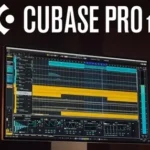Ultimate Guide to Guitar Impulses with the Iconic Marshall 1960A Cabinet
If you’re a guitarist or audio engineer looking to capture the perfect tone, understanding guitar impulses is essential. This article dives into the world of impulse responses based on the legendary 1971 Marshall 1960A guitar cabinet, paired with the classic 1971 Celestion G12M25 ‘pulsonic cone’ preamplifier. Recorded at sampling rates of 48 kHz and 96 kHz, these impulses offer unparalleled sound quality for studio and live settings. Let’s explore the microphones used and the power amp voicing options to help you achieve the ultimate guitar tone.
Capturing the Perfect Tone: Microphones for Guitar Impulses
The quality of a guitar impulse heavily depends on the microphones used during recording. For this setup with the Marshall 1960A cabinet, a diverse range of high-quality mics was employed to capture every nuance of the sound. Here’s a breakdown of the microphones used:
- Shure SM57: A classic dynamic mic known for its versatility and ability to handle high sound pressure levels, perfect for close-miking guitar cabinets.
- Sennheiser e906: Designed specifically for guitar amps, this mic delivers a punchy and detailed sound.
- Sennheiser MD421: A dynamic microphone with excellent low-end response, ideal for capturing the depth of a guitar cabinet.
- AKG C414 XLS: A condenser mic offering multiple polar patterns for flexible recording setups.
- sE Electronics X1R: A ribbon microphone that adds warmth and smoothness to the guitar tone.
- Shure SM7B: Popular for its flat frequency response, often used in studio recordings for guitars and vocals.
- Sennheiser MD441: A dynamic mic with a supercardioid pattern, great for isolating the cabinet’s sound.
- Behringer ECM8000: An affordable condenser mic used for measurement and ambient recording.
- AKG C451: A small-diaphragm condenser mic known for its clarity and precision.
Using a combination of these microphones ensures that every aspect of the Marshall 1960A’s tone is captured, from the raw power of the Celestion G12M25 speakers to the subtle overtones that define its character.
Power Amp Voicing: Tailoring Your Guitar Sound
Beyond the microphones and cabinet, the power amp voicing plays a critical role in shaping the final sound of your guitar impulses. This setup offers three distinct voicing options to suit different playing styles and genres:
- Idealized-NULL-Amp: A neutral setting that provides a clean slate, allowing the natural tone of the cabinet and speakers to shine through.
- Push-Amp: Adds a bit of grit and overdrive, perfect for rock and blues tones that need extra punch.
- Tube-Amp: Emulates the warm, dynamic response of a classic tube amplifier, ideal for vintage and classic rock sounds.
Experimenting with these tube amp settings and voicing options can help you dial in the exact tone you’re looking for, whether you’re recording in a studio or performing live. ВТОРАЯ ТЕСТОВАЯ ССЫЛКА
Why Choose Guitar Impulses with Marshall 1960A?
The 1971 Marshall 1960A cabinet, combined with the Celestion G12M25 speakers, is a cornerstone of rock and metal history. Its rich, powerful sound has been featured on countless iconic recordings. By using high-fidelity guitar impulses at 48 kHz and 96 kHz, you can bring this legendary tone into your digital audio workstation (DAW) or live rig without needing the physical gear. Plus, the variety of guitar cabinet microphones used ensures that you have a wide palette of tonal options at your fingertips.
Conclusion
Whether you’re a seasoned producer or a guitarist exploring digital tone solutions, the guitar impulses based on the 1971 Marshall 1960A cabinet offer a versatile and authentic sound. With top-tier microphones like the Shure SM57 and Sennheiser e906, along with customizable power amp voicing options like the Tube-Amp setting, you can craft the perfect guitar tone for any project. Start experimenting with these impulses today and elevate your music to the next level! ПЕРВАЯ ТЕСТОВАЯ ССЫЛКА
![cabIR – MR-CB71 G12M25 (WAV) [IR library] – VST CRACK](https://smarttradex.net/wp-content/uploads/2025/06/5f6c3203cf681563a56bb51b1c93cde9.webp)

